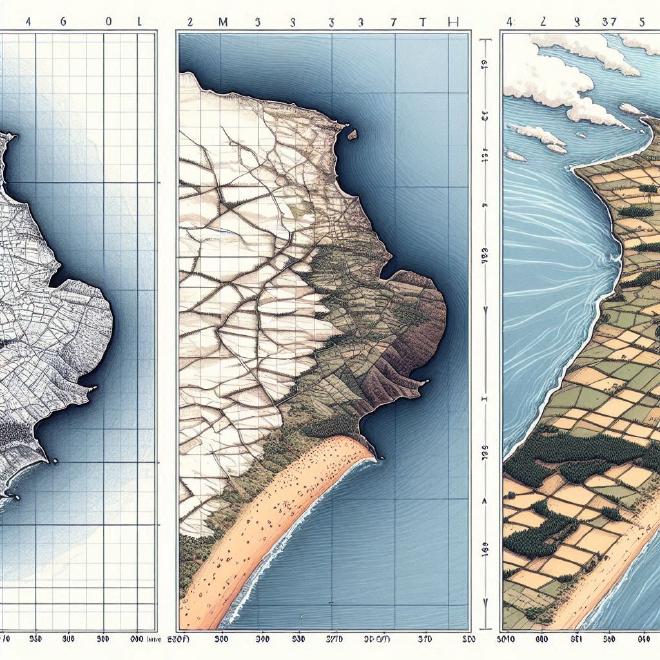The Coastline Paradox of Software Development: Specs All the Way Down
Table of Contents

The Coastline Paradox of Software Development: Specs All the Way Down #
The coastline paradox states that the measured length of a coastline depends on the scale of measurement—the finer the measurement, the longer the coastline appears. If you measure from space, you get a rough estimate. Zoom in to measure with a kilometer ruler, and the coastline appears longer as you account for more curves and inlets. Use a meter stick, and it grows further. In theory, if you kept measuring down to the level of individual grains of sand, the coastline would be infinitely long.
Software development follows a similar process of refinement. A high-level idea—like “build an e-commerce platform” —is like viewing a coastline from space: it captures the big picture but lacks details. As we refine this idea, breaking it into high-level outlines, detailed specifications, and finally, code, we are effectively “zooming in” on the problem, revealing more complexity at each step.
Zooming in on Software Development #
-
Conceptual Vision – This is the broadest view, like looking at the whole coastline from orbit. It’s a product idea, a high-level goal: “We need an app for booking appointments.” At this stage, it’s vague, much like saying “this coastline is about 1,500 km long” without defining how precisely it’s measured.
-
High-Level Outline – Now, we break this concept into key components: user authentication, booking flow, notifications, payment processing. This is like measuring the coastline with a 100 km ruler—it adds shape but is still a rough approximation.
-
Detailed Specification – At this stage, we define user stories, system architecture, APIs, and database schemas. This is measuring the coastline with a finer ruler, adding in the bays, cliffs, and inlets we previously ignored.
-
Working Code (High-Level Language) – Writing software in a high-level language like Ruby or Python is like using an even finer ruler. It’s an implementation, but one that still abstracts lower-level details (memory management, manual optimizations).
-
Working Code (Low-Level Language) – Writing the same software in C or Assembly is like zooming in even further, measuring every last rock and grain of sand. It’s still the same coastline, just described with far more precision.
Code is Just the Most Detailed Specification #
At every level, we are just creating a more refined version of the original concept. Even the final working software is just the most detailed version of the specification, one that happens to be executable by a computer. Code is not some separate entity—it is simply the most granular level of defining what the system should do.
A high-level Ruby implementation is a more abstracted spec compared to a C implementation, just as measuring a coastline with a kilometer ruler is more abstract than measuring it with a microscope.
Why This Matters #
- Skipping levels leads to false precision – Jumping straight from a high-level idea to code (or expecting AI to) ignores the necessary process of refining details.
- There is no absolute stopping point – Just as a coastline’s length depends on the scale of measurement, software development is an ongoing process of refinement.
- The illusion of completion – People assume code is the “final step,” but in reality, it’s just the most detailed version of the spec that happens to run. Bugs, optimizations, and refactoring prove that even working code is just another step in the measurement process.
In the end, software is specs all the way down—from the initial vision to the most detailed implementation, just as a coastline’s length keeps growing the closer you measure it.